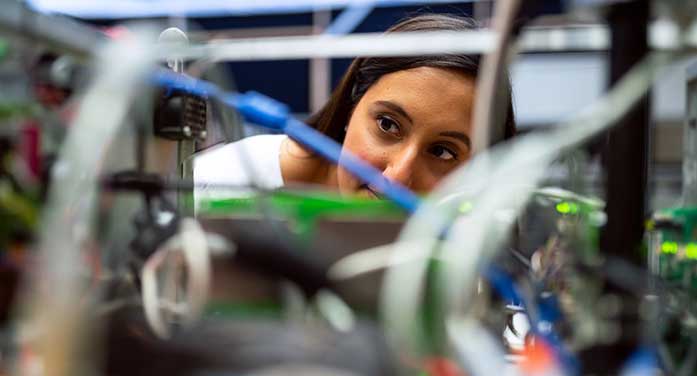 A new report shows that Canada’s major oil and gas companies continued their steady drumbeat of big spending on cleantech research and development in 2020, despite facing unprecedented challenges related to the global pandemic.
A new report shows that Canada’s major oil and gas companies continued their steady drumbeat of big spending on cleantech research and development in 2020, despite facing unprecedented challenges related to the global pandemic.
Together, Suncor Energy, Canadian Natural Resources, Imperial Oil, Syncrude and TC Energy invested approximately $1.1 billion in research and development in 2020, according to the latest ranking of Canada’s top corporate R&D spenders by Research Infosource.
That maintains a world-leading trend in place since 2012 of major Canadian oil and gas companies collectively spending more than $1 billion a year on R&D, according to BMO Capital Markets. And it has paid dividends.
“The Canadian oil sector has meaningfully outpaced global peers in terms of R&D investment over the past decade, and this has been reflected in vastly improved emissions intensity and other important sustainability measures,” says BMO analyst Jared Dziuba.
The industry’s strong focus on R&D and technology development helps ensure that environmental performance improvements will move faster in the future, he says.
According to a recent report by IHS Markit, Canada’s oil sands producers are on track to, for the first time, start reducing total greenhouse gas emissions within the next five years.
This follows more than a decade of producers consistently decreasing emissions per barrel, otherwise known as emissions intensity.
Driving R&D investment now will likely be work on carbon capture and storage projects to reduce total emissions, Dziuba says.
Over the last two decades, operating capture and storage (CCS) projects in Canada have removed more than 43 million tonnes of CO2 from the atmosphere, or the equivalent emissions from about 9.3 million cars. Additional R&D can reduce costs and enable storage development at a much larger scale.
Without carbon capture, we will not meet our climate goals by Krystle Wittevrongel
Carbon capture not only prevents the release of CO2 into the atmosphere but can also reduce overall accumulation
“We think that the Oil Sands Pathways to Net Zero Initiative announced in 2021 by the top six oil sands producers will kickstart the next wave of major investment in R&D for the group, and commercial deployment of CCS to advance the industry’s collective goal of net zero emissions by 2050,” Dziuba says.
“That said, there are several other key technologies in the oil sands R&D pipeline that are also awaiting rollout and could have a meaningful impact on sustainability initiatives in coming years.”
Deborah Jaremko is director of content for the Canadian Energy Centre, an Alberta government corporation funded in part by taxes paid by industry on carbon emissions. For interview requests, click here.
The opinions expressed by our columnists and contributors are theirs alone and do not inherently or expressly reflect the views of our publication.
© Troy Media
Troy Media is an editorial content provider to media outlets and its own hosted community news outlets across Canada.


